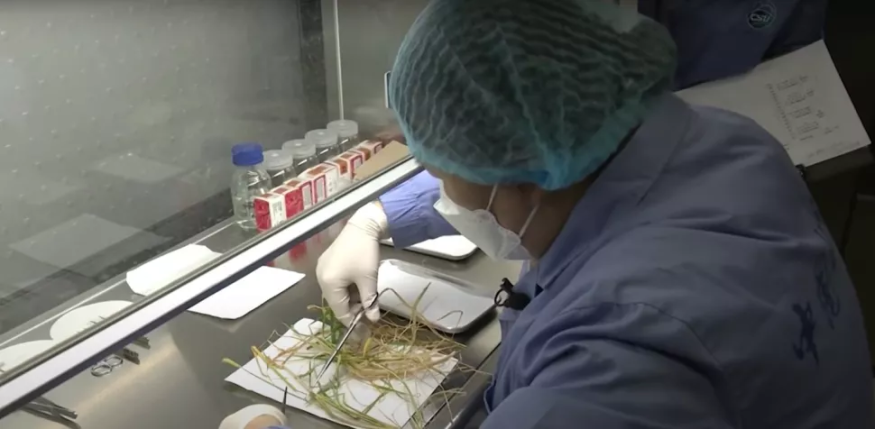Three Chinese astronauts returned to Earth on Sunday after completing a six-month mission on China's space station. The astronauts, Commander Chen Dong and teammates Liu Yang and Cai Xuzhe, landed in the re-entry capsule of the Shenzhou-14 spacecraft in north China's Inner Mongolia Autonomous Region at 8:09 p.m. local time.
The China National Space Administration declared the mission a "complete success". The astronauts had been overseeing the final stages of construction on the space station, which was completed in November. The successful completion of the space station mission represents a significant milestone in China's 30-year-long manned space program, which was first approved in 1992. It also served as the start of enduring Chinese occupancy in orbit.
Construction of the station began in April 2020 with the launch of its first and largest module, Tianhe, which serves as the living quarters for visiting astronauts, as reported by Reuters. After landing, the three astronauts radioed that they were feeling fine, and the message was greeted with applause at the Beijing Aerospace Flight Control Center (BACC).
Analyzing the Growth Life of Rice in the Orbit
Following the CGTN report, the astronauts also took part in China's first crew handover. Adding the Wentian and Mengtian modules to the Tianhe core module allowed the Shenzhou 14 and newly arrived Shenzhou 15 crews to spend five days together on board. This sketched the first period in China had six astronauts in orbit simultaneously.
These Chinese scientists are analyzing rice, Thale cress, and other plants after the Shenzhou 14 astronaut crew cultivated samples in space and brought them back to Earth. The samples were grown in microgravity on China's Tiangong space station during the 120-day mission, during which the astronauts took the seeds through their entire life cycle, from germination to reproduction. The analysis findings will be used to study the effects of space on plant growth and development.
The samples were delivered to the Chinese Academy of Sciences (CAS) for testing, where researchers will compare the plants' growth in microgravity to control samples on Earth. Zheng Huiqiong, a researcher at the Center for Excellence in Molecular Plant Science under CAS, said that growing the plants was challenging for the astronauts. The testing findings will provide valuable insights into the effects of space on plant growth and development.

ALSO READ : China Aims to Get Mars Rock Samples By 2031; Will It Leave NASA, ESA Behind Space Race By 2 Years?
Providing Valuable Insights for Future Missions
Zheng Huiqiong explained that the limited space and artificial environment made it difficult for the astronauts to complete the plants' life cycle. She added that the biggest hardship is to guarantee that the plant produces it through every development stage and can unfold naturally. The testing findings will provide valuable insights into the effects of space on plant growth and development.
Space.com mentioned that China has been experimenting with rice and other plants in space for over 30 years by sending seeds into orbit for brief trips during which they were exposed to the more increased radiation atmosphere of low Earth trajectory. This "space mutagenesis" process is used to search for rice with genetic mutations that enhance their yield or resistance to disease. The findings of these experiments provide valuable insights into the effects of space on plant growth and development.
This span, by skimming at the whole life process of rice, scientists are more inquisitive in understanding the possibility of cultivating vegetables and nourishment production for profound space expeditions. While the U.S. and its partners are working on the Artemis program, China also has its plan for an International Lunar Research Station. The findings of these experiments will provide valuable insights into the feasibility of growing food for long-term space missions.
RELATED ARTICLE: China's Chang'e-5 Mission Finds Mineral on the Moon That Could be Used for Nuclear Fusion
Check out more news and information on Space in Science Times.












